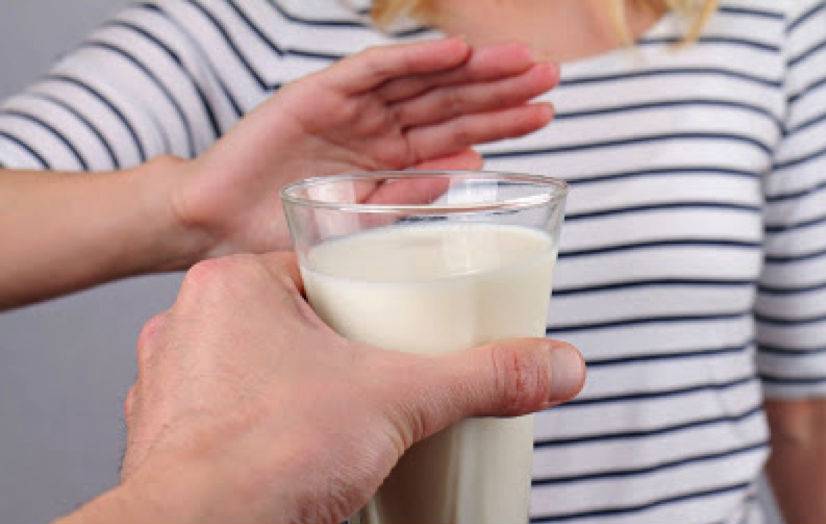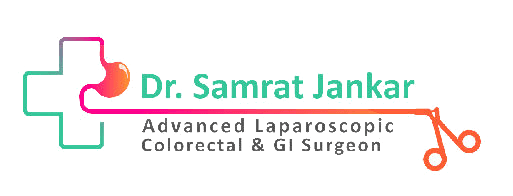
Lactose Intolerance – Symptoms, Causes and Precautions
Lactose intolerance is a condition in which a person cannot digest lactose. The body is unable to break down lactose, a disaccharide (type of sugar) found in dairy products such as milk.
So, when you consume dairy or milk products, you will feel a lot of symptoms, including stomach cramps, gassiness, and sometimes diarrhoea. This can occur anywhere from half an hour to an hour of consumption.
If you are lactose intolerant, please contact Dr. Samrat Jankar, one of the best gastric doctors in Pune. He specializes in the diagnosis and treatment of colon and rectal disorders.
Almost 60% to 65% of Indians are lactose intolerant, raising the question of whether we should consume dairy.

Common Signs And Symptoms Of Lactose Intolerance:
Bloating And Stomach Pain :

When your body cannot digest the lactose, it moves through your gastrointestinal tract to reach the colon. The colon ferments this undigested lactose and produces excess gas, water, and acids.
The increase in acids and gases causes stomach pain and cramps. The bloating or distention results from an increase in gas and water in the colon, causing the gut wall to expand.
Diarrhoea :

Diarrhoea is when you have thin, watery stools. Lactose intolerance increases the water in your colon. This increases the volume and liquid content of your stool.
Constipation :

Constipation causes you to have infrequent bowel movements. The stool feels hard and incomplete. There is abdominal discomfort, bloating, and excess straining when passing the stool.
Methane gas is produced when the colon bacteria ferment undigested lactose. Methane is known to delay the passage of food through the intestine, causing constipation in certain people. Constipation is a far less common symptom than diarrhoea.

Lactose fermentation boosts the formation of hydrogen, carbon dioxide, and methane in the colon, leading to increased flatulence.
The colon bacteria become particularly good at converting lactose into acids and gases in people who have lactose intolerance. This causes the colon to ferment more lactose, which increases flatulence even more.
Nausea And Vomiting :

Nausea is when you feel uneasiness and discomfort in the stomach. It often comes with an urge to vomit but may not result in vomiting. Vomiting is the forceful release of your stomach contents.
If you have any of the above symptoms after eating dairy products, consult with Dr. Samrat Jankar, a highly skilled and famous gastroenterologist in Pune.
What causes lactose intolerance?
Primary lactose intolerance – The most frequent type of lactose intolerance results from a decrease in lactase production as people become older. This causes your capacity to absorb lactose to diminish over time.
So you are more likely to detect indicators of lactose intolerance as you become older. This type of lactose intolerance is more widespread in some groups than others, so it could be partly genetic.
Secondary lactose intolerance – This is due to a disorder causing inflammation in the wall of your gut. It may result in a temporary decrease in the production of lactase. Crohn’s disease, celiac disease, chemotherapy, and ulcerative colitis contribute to secondary lactose intolerance.
Congenital lactose intolerance – It’s a rare, inherited form of lactose intolerance. Both parents must have a specific genetic disorder for congenital lactose intolerance for the child to be born with it.
These newborns are unable to nurse due to the lactose content in breast milk, and the disease can be fatal if not treated promptly. Severe diarrhea and excessive calcium levels are possible side effects. It is a lifelong condition.
Developmental lactose intolerance – It’s only observed in premature newborns whose digestive systems have not developed fully. It produces symptoms such as digestive distress. This issue usually goes away as the baby grows older. But in the meanwhile, your baby might need lactose-free formulas instead of breast milk.
If you notice symptoms of lactose intolerance, getting it tested is the best option. Visit Dr. Samrat Jankar; he is exceptionally knowledgeable in gastrointestinal disorders and a proficient surgical gastroenterologist in Pune.
What precautions can I take to avoid lactose intolerance symptoms?

You can determine which food items are bothering you by trial and error tactics. One of the best ways to help diagnose whether or not you have lactose intolerance is to keep a food diary.
Keep track of the types of foods you eat and observe if they cause any symptoms after you eat them. If your lactose sensitivity is severe, you must avoid dairy products.
Several calcium-fortified foods have high calcium content and can offer a daily calcium intake of 1000mg. Calcium can be found in broccoli, juices, cereals, fish, almonds, and soy milk.
You can drink non-dairy items high in protein, minerals, and vitamin D like milk. You should introduce these alternatives generously to your diet.
Lactose isn’t found in high quantity in every type of dairy product. Lactose levels are low in low-fat milk and hard cheeses like parmesan, cheddar, and swiss. You can also obtain lactase enzymes in capsules, tablets, drops, and other forms.
Conclusion
Lactose intolerance has long been recognized as a widespread problem affecting many children and people worldwide. Although lactose intolerance is rarely life-threatening, its symptoms can cause severe discomfort and impair the quality of your life.
Treatment is straightforward and focuses on lowering or eliminating the inciting component, lactose, from your diet or supplementing lactase-enzyme replacement.
If you or your loved one is facing problems related to lactose intolerance, reach out to Dr. Samrat Jankar, an experienced gastric doctor in Pune. He has several years of training and is renowned for his expertise and knowledge of the diseases and treatments of the gastrointestinal system.
